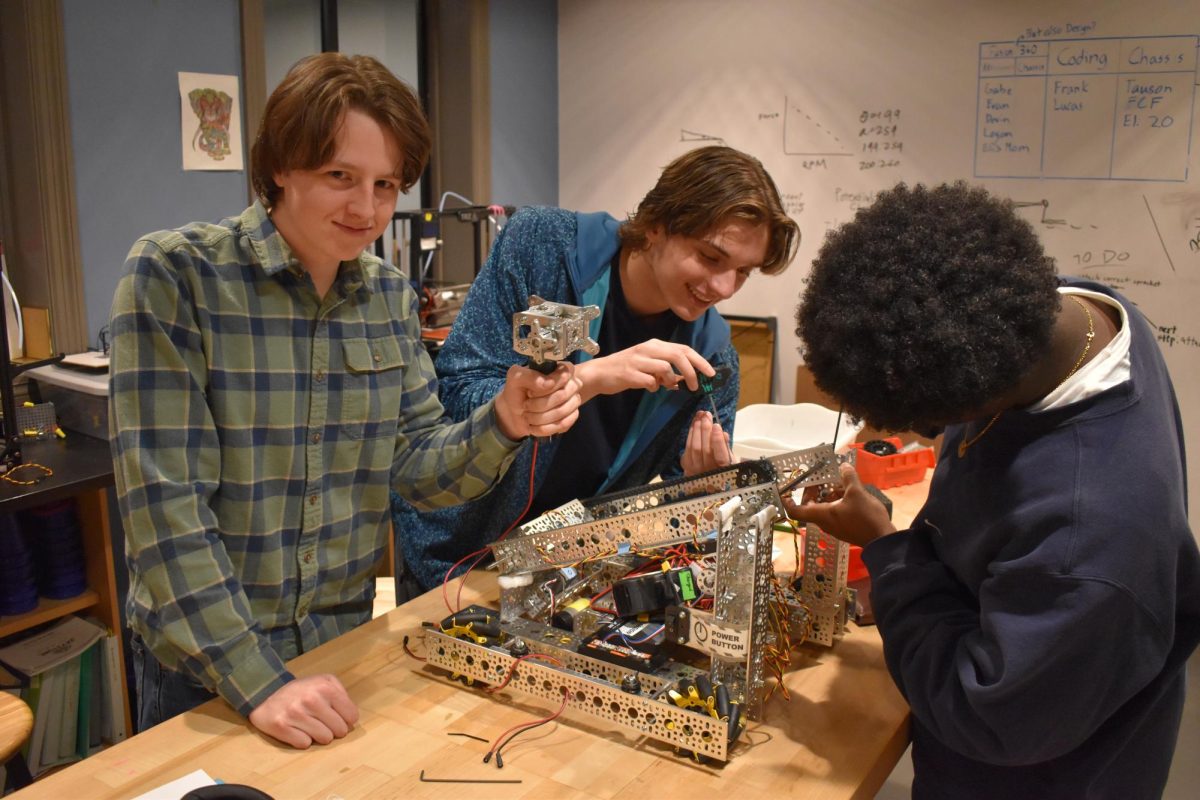Students at Wilmington Friends School are no strangers to success, and they’re not quiet about it whether it be our recent state championship football team, state semifinalist field hockey team, our consistently excellent Mock Trial team, or the various charitable fundraising organizations present at our school, it seems where ever you go you will find someone who is both successful and proud of their accomplishments. There is however one organization within the school, that has not only been extremely successful but also extremely quiet about their success, a club that most students are loosely aware of but need to be more knowledgeable about. You might have seen them working quietly while you walked by the library, or seen them launch disks at freshmen during the club fair at the start of the year, our school’s quiet champions, the robotics team. The robotics team is a strange bunch and frankly presides over a pretty strange club. On the surface, the idea of a robotics club sounds simple, they are a group of people who build robots, but the more you think about it the less simple it becomes. Why do they build robots, how do they build them, how do they judge the success of the robots, how do they stay dedicated to the robots, where do the parts of the robots come from, how much of the coding is done by Janks, do the Robots have names, and most importantly what do they think the school should know about State runner up robotics team. Upon further investigation, I learned to my disappointment that the robots aren’t given names but have certain parameters around how they are built. The club is overseen by, For Inspiration and Recognition of Science and Technology or FIRST. An organization that runs youth robotics competitions across the country. This was a revelation in my perception of our school’s robotics club, they weren’t just building robots for fun, they were building them for competition. Frank Murphy, one of the captains of our school’s robotics team filled me in on the intricacies of of how the competitions work. Frank has been on the robotics team for four years. When he started as a freshman the team had a “partial year” and completed in a “rolled back competition”, but these setbacks didn’t dissuade Frank from the team, and he fell in love with robotics. When asked what he loved about the club he said “My favorite part is that its a great opportunity to expand my knowledge in programming which I love and also learn the complete design of a robot and achieve certain goals through working with other people. I enjoy working with other people to build a complete system” (Murphy 24). Frank explained that the parts that they use to build the robots are sold to the teams by various industrial manufacturing companies that contract with FIRST, only the parts sold by these companies can be used in the competition. The robotics competition season is set up just like any other sport, they have smaller matches that they compete in throughout the season, and then at the end of the season they have a state tournament in which they compete in, Frank described the season by saying that, “Each year schools and nonschool clubs meet with Delaware FIRST and organize 6-8 meets that take place throughout the year, you have to participate in at least two of these meets to qualify for the state championship tournament”. The actual challenges which the robots do are released to the teams at the start of the season and throughout the season the teams work to refine their robots to better complete these tasks. This year the robots have to read QR codes which determine what disks they have to pick up, they then have to pick up said disks and place them in a certain mosaic pattern on a slanted surface. Frank broke down the intricacies of the competition saying “The first 30 seconds of the game are completely autonomous and you can score a lot of points that way because autonomous is difficult for two minutes after that it’s a driver-controlled match where you have drivers controlling the robot”. The robotics team is more than they seem to be at first sight. They are more than coders and engineers, they are competitors competing in a state-wide competition as valid as any sport in the state, and they deserve recognition for it.
































